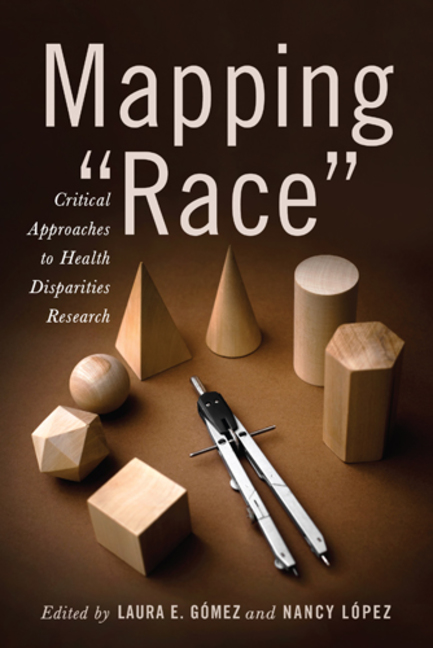Race and ancestry in biomedical research: exploring the challenges
Genome Medicine 2009
Volume 1, Number 8 (2009-01-21)
DOI: 10.1186/gm8
Timothy Caulfield
Faculty of Law and School of Public Health Research, Health Law Institute
University of Alberta
Stephanie M Fullerton
Department of Medical History and Ethics and Department of Genome Sciences
University of Washington School of Medicine
Sarah E Ali-Khan
Program on Life Sciences Ethics and Policy, McLaughlin-Rotman Centre for Global Health, University Health Network
University of Toronto
Laura Arbour
Faculty of Medicine, Island Medical Program
University of British Columbia
Esteban G. Burchard
Department of Biopharmaceutical Sciences and Department of Medicine, Divisions of Pharmaceutical Sciences and Pharmacogenetics, Pulmonary & Critical Care Medicine, and Clinical Pharmacology
University of California, San Francisco
Richard S. Cooper
Department of Epidemiology & Preventive Medicine, Stritch School of Medicine
Loyola University
Billie-Jo Hardy
Program on Life Sciences Ethics and Policy, McLaughlin-Rotman Centre for Global Health, University Health Network
University of Toronto
Simrat Harry
Faculty of Law and School of Public Health Research, Health Law Institute
University of Alberta
Robyn Hyde-Lay
Genome Alberta, Calgary, Alberta, Canada
Jonathan Kahn
Hamline University School of Law
Rick Kittles
Department of Medicine, Section of Genetic Medicine, Department of Human Genetics
University of Chicago
Barbara A. Koenig
Program in Professionalism & Bioethics
Mayo College of Medicine
Sandra S. J. Lee
Stanford Center for Biomedical Ethics
Stanford University Medical School
Michael Malinowski
Paul M Hebert Law Center
Louisiana State University, Baton Rouge
Vardit Ravitsky
Department of Medical Ethics and Center for Bioethics
University of Pennsylvania, Philadelphia
Pamela Sankar
Department of Medical Ethics and Center for Bioethics
University of Pennsylvania, Philadelphia
Stephen W. Scherer
for Applied Genomics, The Hospital for Sick Children, and Department of Molecular Genetics
University of Toronto
Béatrice Séguin
Leslie Dan School of Pharmacy; Program on Life Sciences Ethics and Policy, McLaughlin-Rotman Centre for Global Health, University Health Network
University of Toronto
Darren Shickle
Leeds Institute of Health Sciences,
University of Leeds, United Kingdom
Guilherme Suarez-Kurtz
Pharmacology Division
Instituto Nacional de Câncer, Rio de Janeiro, Brazil
Abdallah S. Daar
Program on Life Sciences Ethics and Policy, McLaughlin-Rotman Centre for Global Health, University Health Network; Department of Public Health Sciences and of Surgery; McLaughlin Centre for Molecular Medicine; Department of Medicine
University of Toronto
The use of race in biomedical research has, for decades, been a source of social controversy. However, recent events, such as the adoption of racially targeted pharmaceuticals, have raised the profile of the race issue. In addition, we are entering an era in which genomic research is increasingly focused on the nature and extent of human genetic variation, often examined by population, which leads to heightened potential for misunderstandings or misuse of terms concerning genetic variation and race. Here, we draw together the perspectives of participants in a recent interdisciplinary workshop on ancestry and health in medicine in order to explore the use of race in research issue from the vantage point of a variety of disciplines. We review the nature of the race controversy in the context of biomedical research and highlight several challenges to policy action, including restrictions resulting from commercial or regulatory considerations, the difficulty in presenting precise terminology in the media, and drifting or ambiguous definitions of key terms.
Correspondence
Recent advances in biomedical research promise increasing insights into complex contributions to traits and diseases, and there is hope that these will lead to global health benefits [1,2] . Analytical and social-justice considerations both recommend thoughtful assessment of the role of social identity, particularly racial or ethnic identity, in the design, conduct and dissemination of clinical and basic science research. Controversies ranging from James Watson’s comments on racial differences in intelligence [3] to the adoption of racially targeted pharmaceuticals, such as the African-American heart-failure drug BiDil [4-7] , remind us that use of the concept of race in biomedical research can have far-reaching, often unanticipated social consequences.
The problem of race in scientific research is not a new one, and the issue seems to perpetually reappear and remain fundamentally unresolved [8] . We are, however, entering a new era in which the fruits of initiatives, such as the Human Genome Project [9,10] , the International Haplotype Map Project [11] , and the recently proposed 1000 Genomes Project [12] , promise to elaborate more fully than ever before the nature and extent of human genetic variation and its relation to social identity. A recent interdisciplinary workshop, ‘Ancestry in health and medicine; expanding the debate’, hosted by the Alberta Health Law Institute and the McLaughlin-Rotman Centre for Global Health, in Toronto, Canada, sought to debate the current status and concerns surrounding these new scientific data, how we relate genetic variation to individual and population-level differences in observable traits, and what this might mean for the effective addressing of significant disparities in health status and disease. A central motivating consideration was how best to secure the anticipated benefits of genetic and related forms of biomedical research in the face of inevitable misunderstandings or misuse concerning genetic variation and race.
Here, we draw together the perspectives of the scholars who participated in the workshop, who have considered the race issue from the vantage point of a variety of disciplines: anthropology, bioethics, clinical medicine, ethical, social, cultural studies, genetic epidemiology, genome sciences, global heath research, law and the social sciences. We review the nature of the race controversy in the context of biomedical research and highlight several challenges to policy action…
Read the entire correspondence here.


